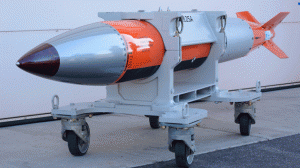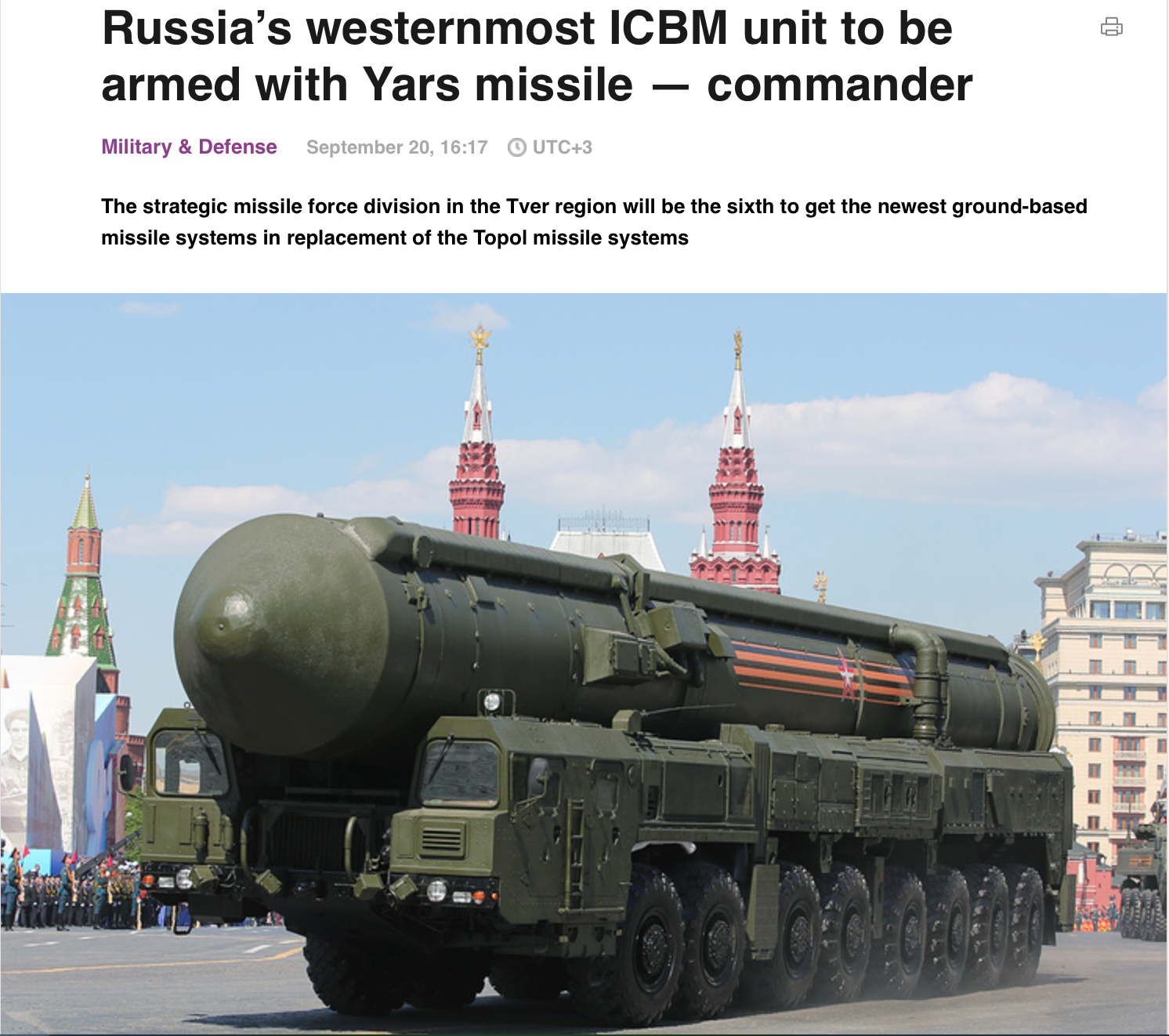Dangerous Crossroads: Both Russia and America Prepare for Nuclear War?

Relevant article selected from the GR archive, first published on GR in September 2016.
Barely acknowledged by the Western media. Both Russia and America are “rearming” their nuclear weapons systems. While the US is committed to a multibillion dollar modernization project, Russia is largely involved in a “cost-effective” restructuring process which consists in decommissioning parts of its land-based ICBM arsenal (Topol) and replacing it with the more advanced Yars RS-24 system, developed in 2007.
While a new arms race has “unofficially” been launched, the US modernization process pertains to the all three legs of the triad system, -i.e land based airborne and submarine launched atomic missiles. It is also coupled with the development of the B61-12 tactical bomb to be deployed in Germany, Italy, Netherlands, Belgium and Turkey.
 Rest assured, the B61-12 is a “mini-nuke” with an explosive capacity of up to four Hiroshima bombs. It is categorized as a “defensive” (peace-making) weapon for use in the conventional war theater. According to scientists on contract to the Pentagon, the B61-11 and 12 (bunker buster bombs with nuclear warheads) are “harmless to civilians because the explosion is underground”.
Rest assured, the B61-12 is a “mini-nuke” with an explosive capacity of up to four Hiroshima bombs. It is categorized as a “defensive” (peace-making) weapon for use in the conventional war theater. According to scientists on contract to the Pentagon, the B61-11 and 12 (bunker buster bombs with nuclear warheads) are “harmless to civilians because the explosion is underground”.
The nuclear triad modernization project is at the expense of US tax payers. It requires the redirection of federal revenues from the financing of “civilian” expenditure categories (including health, education, infrastructure etc) to the “war economy”. It’s all for a good cause: “peace and security”.
War is “Good for Business”
The multibillion dollar project is a financial bonanza for America’s major defense contractors including Boeing, Lockheed Martin and Northrop Grumman, which are also firm supporters of Hillary Clinton’s stance regarding a possible first strike nuclear attack against Russia, China, Iran and North Korea.
Reported by Defense News, US Secretary of Defense Ash Carter on September 26 called for the “need to modernize all three legs of the nuclear triad.” The project would require a major boost in defense expenditure.
Underscoring today’s “volatile security environment”, the multibillion dollar project is required, according to Carter, in view of threats largely emanating from Russia, China as well as North Korea:
Carter’s comments came during a visit to Minot Air Force Base in North Dakota, … Under the fiscal year 2017 budget request, Carter said, the department pledged $19 billion to the nuclear enterprise, part of $108 billion planned over the next five years. The department has also spent around $10 billion over the last two years, the secretary said in prepared comments. The “nuclear triad” references the three arms of the US strategic posture — land-based ICBMs, airborne weapons carried by bombers, and submarine-launched atomic missiles. All of those programs are entering an age where they need to be modernized.
Pentagon estimates have pegged the cost of modernizing the triad and all its accompanying requirements at the range of $350 to $450 billion over the next 10 years, with a large chunk of costs hitting in the mid-2020s, just as competing major modernization projects for both the Air Force and Navy come due.
Critics of both America’s nuclear strategy and Pentagon spending have attempted to find ways to change the modernization plan, perhaps by cancelling one leg of the triad entirely. But Carter made it clear in his speech that he feels such plans would put America at risk at a time when Russia, China and North Korea, among others, are looking to modernize their arsenals. (Defense News, September 26, 2016)
Carter casually dismissed the dangers of a no-win global war, which could evolve towards a “nuclear holocaust”, Ironically “… He also hit at critics of the nuclear program — which include former Secretary of Defense William Perry, [who ironically is] widely seen as a mentor for Carter — who argue that investing further into nuclear weapons will increase the risk of atomic catastrophe in the future. (Defense News, September 26, 2016)
Carter expressed his concern regarding Russia’s alleged “nuclear saber-rattling”.
Russia’s ICBM System
Were Carter’s timely statements in response to Russia redeployment and restructuring of its ICBM system on its Western frontier, which were announced on September 20?
Last week, the Russian news agency Tass confirmed that “The westernmost strategic missile force division in the Tver region will soon begin to be rearmed with the missile system Yars.”
It will be a sixth strategic missile division where the newest mobile ground-based missile complexes will replace the intercontinental ballistic missile Topol,” the press-service of the Strategic Missile Force quotes its commander Sergey Karakayev as saying.
According to the official, this year regiments in the Irktusk and Yoshkar-Ola divisions began to be rearmed. The re-armament of the Novosibirsk and Tagil divisions is nearing completion. Earlier, the Teikovo division was fully rearmed.
The final decision to rearm the strategic missile division in the Tver Region will be made after a command staff exercise there. The press-service said the exercises will be devoted to maneuvering along combat patrol routes.
In the near future the ICBM RS-24 Yars, alongside the previously commissioned monoblock warhead ballistic missile RS-12M2 Topol-M, will constitute the backbone of Russia’s strategic missile force.
The Yars ICBM RS-24 was developed in 2007 in response to the US Missile Shield. It is nothing new in Russia’s military arsenal. It is a high performance system equipped with thermonuclear capabilities.
What this report suggests is the restructuring of Russia’s strategic missile force and the replacement of the Topol system (which Moscow considers obsolete) with the Yars ICBM RS-24.



